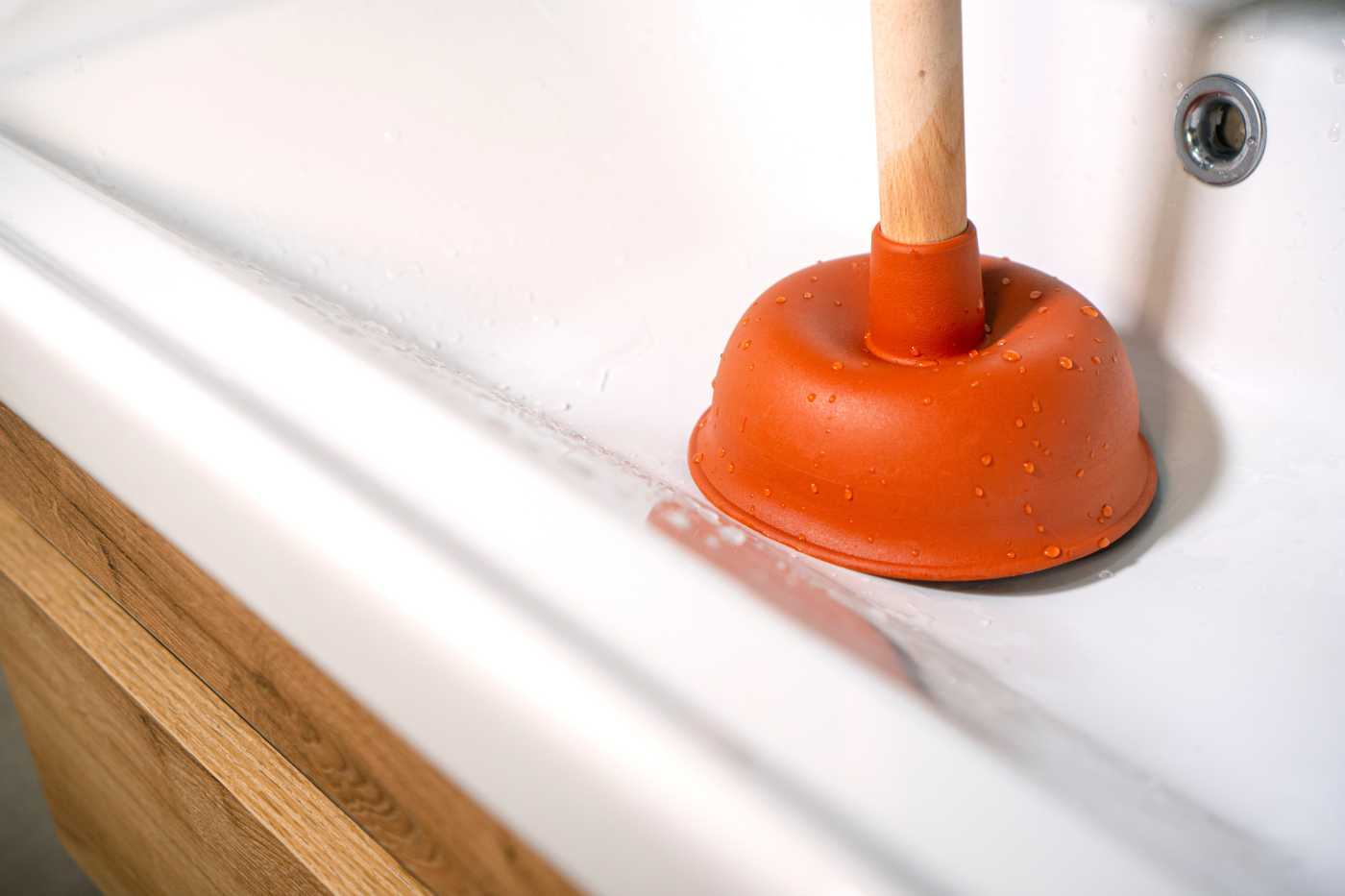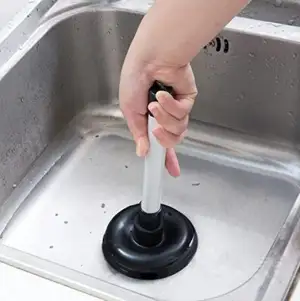Discover Plungers and Drain Cleaner Strategies: Professional Advice
Discover Plungers and Drain Cleaner Strategies: Professional Advice
Blog Article
Do you find yourself trying to locate critical info about How to Unclog Your Sink with a Plunger?

Introduction
Correct upkeep of family drains is important for protecting against blockages and ensuring smooth water circulation. One of the trick devices in every property owner's toolkit is the bettor, alongside various drainpipe cleansers made to take on stubborn obstructions properly. This article explores how to make use of plungers and drainpipe cleaners efficiently to keep your drains pipes moving easily.
Area 1: Recognizing Plungers
Types of Plungers
There are numerous sorts of plungers readily available, each made for various sorts of drains pipes and clogs. The most common kinds consist of mug plungers, flange bettors, and accordion bettors.
Just How Plungers Job
Plungers deal with the principle of creating pressure and suction to remove blockages. When effectively used over a drain, they create a vacuum that can pull out debris or break up clogs.
Selecting the Right Plunger
Selecting the right plunger depends on the type of drain and the nature of the obstruction. Mug bettors are suitable for sinks and bathtubs, while flange bettors are much better fit for toilets because of their style.
Usual Blunders with Plungers
Staying clear of these errors makes certain effective plunging: incorrect seal around the drainpipe, not enough pressure, and unclear bordering particles.
Area 2: Making Use Of Plungers Effectively
Prep work
Prior to diving, make sure the plunger covers the drain completely and creates a limited seal. Clear any type of visible particles around the drainpipe opening.
Technique
Start with mild plunging motions to build suction. Boost stress slowly, utilizing a consistent rhythm. Repeat as needed up until the drain removes.
Fixing Tips
If plunging does not function, attempt changing the seal, applying petroleum jelly for a better seal, or making use of a different kind of bettor.
Section 3: Understanding Drainpipe Cleansers
Types of Drainpipe Cleansers
Drain cleansers can be chemical or enzymatic. Chemical cleaners make use of strong chemicals to liquify obstructions, while chemical cleaners utilize all-natural enzymes to break down raw material.
How Drainpipe Cleaning Company Job
Chemical cleaners react with clogs to dissolve them, while enzymatic cleaners break down organic products like hair and oil without damaging pipes.
Safety and security Considerations
Constantly put on gloves and eye protection when utilizing chemical drain cleaners. Guarantee appropriate ventilation and adhere to maker guidelines meticulously.
Eco-Friendly Alternatives
Think about utilizing vinegar and baking soft drink or enzyme-based cleansers for environment-friendly options that are much safer for pipelines and the setting.
Area 4: Using Drain Cleaners Properly
Application Techniques
Put chemical cleaners straight into the drain opening. Allow them to help the recommended time prior to purging with warm water. Enzymatic cleansers should sit over night.
Safety measures
Prevent blending various sorts of cleaners, as this can create hazardous fumes. Never utilize chemical cleaners in conjunction with a plunger, as spilling can take place.
Handling Persistent Blockages
For persistent clogs, consider utilizing a plumbing serpent or calling an expert plumbing professional to prevent damages to pipelines.
Verdict
In conclusion, comprehending just how to utilize plungers and drain cleaners efficiently is essential for maintaining healthy and balanced plumbing systems. By picking the right tools and methods, property owners can deal with small obstructions and prevent major plumbing issues down the line.
How To Properly Use A Plumbing Snake To Clear Drains
When any drain clogs in our home arise, we tend to gravitate toward the plunger and little else. In cases where the plunger and its vacuum-created pressure are not able to clear clogs, many immediately move to harmful chemicals or simply call their plumber to fix the issue.
we’re happy to help with all drain cleaning needs and concerns. This includes informing you on a few other home remedies you may have at your disposal for minor to moderate clogs, one of which is the use of a plumbing snake. Many people have never used one of these before – let’s go over the steps to take when your drain clogs and you have a plumbing snake available.
Attempt Plunger Use
The first step here, as we noted above, should indeed be to grab your plunger when you notice a drain clog and attempt to resolve it this way. If you’re unsure how to use a particular type of plunger, our plumbers can answer any questions you have. If this doesn’t do the trick, however, you move on to the snake.
Locate And Prepare Snake
A plumbing snake is a metal or plastic device that’s generally about a quarter of an inch thick. It’s design with significant extensions, meant to reach down into your clogged drain and push the clog out. Snakes also contain drain augers that will latch onto and push stubborn blockages.
If your plunger doesn’t clear a clog, locate your snake and bring it to the drain in question. We also recommend keeping a bucket nearby to collect the clog once you pull it out, plus we’d advise wearing goggles and possibly protective gloves.
Feed Snake
Once you’re ready to go, feed the snake slowly down the drain, using the crank device it comes with to keep it moving until it finds the clog. Once this happens, much of the clog will be latched onto the coil so you can pull it out, while the rest will simply break up and flow downward.
Detach Debris
Remove the snake slowly from the drain, and once you’ve done so, pick off any debris that’s stuck to the coil. This is another area where wearing gloves is a must.
Flush Drain
Finally, take a few minutes to ensure the snake has done its job correctly. If you’ve been using it on a toilet, flush the toilet a couple times and make sure everything flows well. If you’ve used it on a different drain, flush it with some room temperature water.
https://www.mybuddytheplumber.com/blog/how-to-properly-use-a-plumbing-snake-to-clear-drains/

Application Techniques
Put chemical cleaners straight into the drain opening. Allow them to help the recommended time prior to purging with warm water. Enzymatic cleansers should sit over night.
Safety measures
Prevent blending various sorts of cleaners, as this can create hazardous fumes. Never utilize chemical cleaners in conjunction with a plunger, as spilling can take place.
Handling Persistent Blockages
For persistent clogs, consider utilizing a plumbing serpent or calling an expert plumbing professional to prevent damages to pipelines.
Verdict
In conclusion, comprehending just how to utilize plungers and drain cleaners efficiently is essential for maintaining healthy and balanced plumbing systems. By picking the right tools and methods, property owners can deal with small obstructions and prevent major plumbing issues down the line.
How To Properly Use A Plumbing Snake To Clear Drains
When any drain clogs in our home arise, we tend to gravitate toward the plunger and little else. In cases where the plunger and its vacuum-created pressure are not able to clear clogs, many immediately move to harmful chemicals or simply call their plumber to fix the issue.
we’re happy to help with all drain cleaning needs and concerns. This includes informing you on a few other home remedies you may have at your disposal for minor to moderate clogs, one of which is the use of a plumbing snake. Many people have never used one of these before – let’s go over the steps to take when your drain clogs and you have a plumbing snake available.
Attempt Plunger Use
The first step here, as we noted above, should indeed be to grab your plunger when you notice a drain clog and attempt to resolve it this way. If you’re unsure how to use a particular type of plunger, our plumbers can answer any questions you have. If this doesn’t do the trick, however, you move on to the snake.
Locate And Prepare Snake
A plumbing snake is a metal or plastic device that’s generally about a quarter of an inch thick. It’s design with significant extensions, meant to reach down into your clogged drain and push the clog out. Snakes also contain drain augers that will latch onto and push stubborn blockages.
If your plunger doesn’t clear a clog, locate your snake and bring it to the drain in question. We also recommend keeping a bucket nearby to collect the clog once you pull it out, plus we’d advise wearing goggles and possibly protective gloves.
Feed Snake
Once you’re ready to go, feed the snake slowly down the drain, using the crank device it comes with to keep it moving until it finds the clog. Once this happens, much of the clog will be latched onto the coil so you can pull it out, while the rest will simply break up and flow downward.
Detach Debris
Remove the snake slowly from the drain, and once you’ve done so, pick off any debris that’s stuck to the coil. This is another area where wearing gloves is a must.
Flush Drain
Finally, take a few minutes to ensure the snake has done its job correctly. If you’ve been using it on a toilet, flush the toilet a couple times and make sure everything flows well. If you’ve used it on a different drain, flush it with some room temperature water.
https://www.mybuddytheplumber.com/blog/how-to-properly-use-a-plumbing-snake-to-clear-drains/

We are very curious about Here's How to Correctly Use a Toilet Plunger and I hope you liked the post. Are you aware of another person who is enthusiastic about How To Use Your Toilet Plunger Correctly in 5 Easy Steps? Be sure promote it. Thank-you for your time invested reading it.
Estimating Report this page